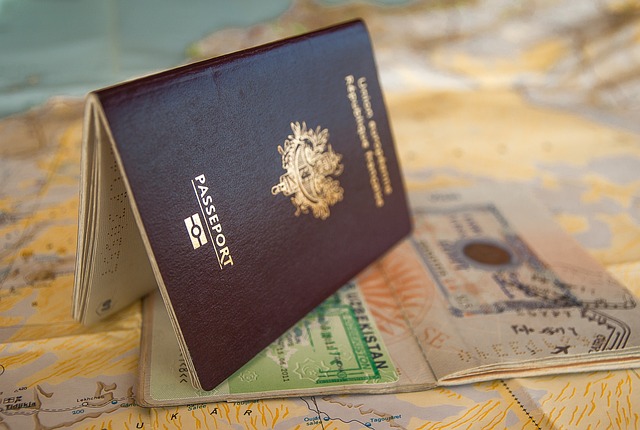Various routes are available to permanent residents looking to settle permanently in the U.S., each with its requirements and procedures.
Employment-based Green Cards are available to professionals, entrepreneurs and skilled workers in certain categories. This process could take one year or more depending on which category qualifies.
Immigration Eligibility Assessment
As an immigrant to the USA, permanent residency can be obtained in several ways: employment, Green Card lottery selection process, family sponsorship or humanitarian programs. To be eligible for these programs, one must meet several criteria, including financial requirements for supporting themselves and their family while living in America and being free of criminal convictions.
Once you have completed all the required steps, it will be time to apply for a Green Card through USCIS. Your application will be assessed by an immigration officer reviewing your paperwork before conducting a personal interview. He or she may ask you questions about your past and future.
If your petition is approved, the National Visa Center (NVC) will inform you that it has been processed. NVC will inform you about any fees or paperwork to submit, such as Form DS-260: Application for Immigrant Visa and Alien Registration; once this has been submitted you should arrange an interview at your local U.S. Embassy or Consulate.
Visa Preference Categories
In the USA, permanent residency (P.R.) applications can take various routes; each path requires specific qualifications and has its wait times. There are family-preference, employment-based, and special categories for refugees and asylees. The United States Government grants certain categories a certain number of visas annually. Family-based preferences usually fall under this umbrella: spouses, minor children, unmarried adult children of U.S. citizens and legal permanent residents are given priority status for visa consideration. Immediate siblings of U.S. citizens and legal permanent residents are also eligible. Professionals with advanced degrees and skilled workers are given priority. Finally, the category is reserved for individuals who have received job offers from U.S. companies or are multinational executives and managers.
Once an individual’s priority date becomes current, they can apply for a visa. This process usually entails submitting an application, attending an interview, undergoing background checkschecks and medical exams and verifying your background. Given its complexity, it is recommended to work with an experienced immigration attorney from the beginning to minimize delays and ensure your case will move swiftly through this system.
Labor Certification
U.S. PR can be obtained through various pathways, depending on an individual’s education and work experience. When seeking employment-based permanent residency (P.R.), one of the initial steps will involve filing a PERM labour certification application with the Department of Labor; this step protects both U.S. workers and the the job market by ensuring available positions aren’t filled by foreign nationals.
Sponsoring employers are legally mandated to conduct an exhaustive job market test to ascertain no suitable U.S. workers are available for the position in which they intend to hire a foreign worker. This requires advertising the position, reviewing resumes, and conducting salary tests, which may take up to six months, depending on circumstances.
Once a PERM labour certification is approved, the sponsoring employer can file an immigrant visa petition on behalf of a foreign worker. This petition for an immigrant visa, commonly called a green card, allows the worker to live, work and study in America for an undetermined amount of time. An Employment Authorization Document (EAD) accompanies this visa that permits legal employment opportunities at any job site in America.
USA PR Visa Process: Petition Filing
There are various paths available to individuals seeking a green card. Options include sponsorship from U.S. citizens or companies, asylum, refugee status or applying through the Diversity Visa Lottery program. Each category’s application process varies, and how quickly one becomes eligible depends on how well prepared they are and the documentation available that proves their eligibility.
Once your petition has been approved, the National Visa Center (NVC) or Kentucky Consular Center (KCC) will provide paperwork that must be filled out and submitted with any fees due. This process is known as Form DS-260 or Alien Registration and Immigrant Visa Application.
Due to high demand and decades-old annual statutory limits on immigrant visas, final action dates may not move significantly this fiscal year for India-based employment-based green cards. Ogletree Deakins will keep an eye on this development closely and post updates as needed on our immigration blog; for more information, please reach out directly to one of the members of our firm’s immigration practice group.
National Visa Center Processing
Permanent residency in the USA can be achieved via various routes. Depending on the chosen option, this process could take longer or shorter than anticipated. Still, as long as all documents are submitted correctly and on time, obtaining U.S. PR shouldn’t be too hard of an endeavour.
You will be asked questions regarding your background, education, employment history and lifestyle at your interview. To provide proof of identity, passport-sized photos from recent times should also be submitted as evidence of identity.
Once the NVC has reviewed your case, they will pass it along to an embassy or consulate that will make the final decision on your visa application. You can find contact information for these entities through the State Department’s Embassies and Consulates Directory website.
Before sending family-based green card applications to consular processing, the NVC ensures they are “documentarily qualified” or interview-ready. Furthermore, they notify you if your application has entered the queue and provide a “priority date.”
Consular Processing
Individuals seeking permanent residency in the USA have many avenues open; some involve sponsoring employers, while others provide direct pathways for individuals and families. Each pathway has specific criteria that must be fulfilled to qualify; the most frequently employed methods include working as skilled workers, seeking asylum, marrying U.S. citizens or receiving sponsorship from immediate family.
Consular processing offers another route to green card citizenship, suitable for individuals without sponsors or who cannot wait until employment-based immigration processes. To qualify for consular processing, individuals must meet eligibility requirements in their immigrant category and have a valid passport. Before proceeding with this route, a medical examination and fingerprint submission may also be necessary.
Medical exams for consular processing must be performed by physicians designated by the USCIS offices where you’re applying. Each embassy and consulate maintains a list of authorized doctors. The boundless USCIS fee calculator helps you assess all fees required for your consular processing application, including medical examination and fingerprinting.
Immigrant Visa Approval
The United States offers numerous avenues for those seeking permanent residency to become citizens or permanent residents, each with its requirements and steps. However, which route you follow ultimately depends on your circumstances – for instance, some immigrate through employer sponsorship while others enter through refugee or asylum status. Furthermore, spouses of citizens or permanent residents and children of such residents also have pathways.
Once USCIS approves your immigrant petition, your case will be forwarded to the National Visa Center (NVC), an office within the Department of State that prepares visa applications to be approved by U.S. consulates overseas.
Before submitting an NVC form, ensure you have all required documents ready. Depending on your category, employment proof or evidence of a relationship may be required. If you require help regarding your documentation or have questions, speak to an immigration consultant for guidance or call your congressperson, who may offer their support in exceptional cases.
Adjustment of Status
If you are already present in the United States and meet all the immigration criteria of your category, adjustment of status allows eligible foreign nationals to become lawful permanent residents without returning home and going through consular processing.
Only certain immigrant categories can utilize the adjustment of the status path: these include immediate relatives of U.S. citizens, spouses who entered as K-1 fiancees, refugees or asylees seeking asylum, and workers awarded visas through diversity lotteries and humanitarian programs.
To obtain a green card through this route, file form I-485 with supporting documents and submit them for consideration by USCIS. Upon approval of your application, USCIS will schedule an interview and review your documents before issuing you your ten-year green card. Those not qualifying can still become legal residents through waivers, technical inadmissibility situations and other exceptions, but these situations take longer and require special circumstances for consideration.








